Ensuring Confidentiality and Trust in Virtual Care
As telehealth continues to revolutionize healthcare delivery, maintaining robust privacy and security measures remains essential. This article explores comprehensive strategies and best practices for designing telehealth consultations that prioritize patient confidentiality, adhere to legal standards like HIPAA, and foster trust through transparent security policies.
Understanding Key Privacy and Security Considerations in Telehealth
What are the key privacy and security considerations in telehealth consultations?
Ensuring privacy and security during telehealth visits is essential to protect patients' sensitive health information. One of the primary measures is safeguarding data through encryption, which scrambles information during transmission and storage, making it unreadable to unauthorized parties. Using secure communication platforms that comply with HIPAA (Health Insurance Portability and Accountability Act) guarantees that data remains confidential.
Strong authentication methods are vital. Patients and providers should use strong, unique passwords and enable multi-factor authentication (MFA) to verify identities effectively. Session security can be further enhanced by turning on encryption tools available in telehealth platforms and ensuring that privacy modes are active during consultations.
Environmental factors also play a significant role. Patients should conduct appointments in private settings, ideally in quiet, enclosed spaces, and ensure that no unauthorized individuals are nearby. Turning off or silencing electronic devices that could overhear or record conversations reduces privacy risks.
Device management is another critical aspect. Patients should use personal devices with updated security software, such as antivirus programs, and avoid conducting telehealth sessions on workplace or public devices and networks. Connecting through private, secured Wi-Fi rather than public Wi-Fi networks minimizes the risk of data interception or malware infection.
Operational policies, including regular risk assessments, detailed privacy protocols, and staff training, help uphold security standards. Healthcare providers should verify patient identities at the start of each session, obtain informed consent explicitly related to privacy, and maintain clear policies for data storage and device security.
To maintain trust, transparency about privacy practices is vital. Patients should be informed about how their data is protected, the use of secure portals, and potential risks, enabling them to participate actively in their privacy management.
In summary, combining technological safeguards, environmental controls, and operational policies ensures that telehealth services remain secure and trustworthy. When both providers and patients adhere to these best practices, the risks to health information privacy can be significantly minimized.
Best Practices for Ensuring Privacy and Security in Telehealth
What are best practices for ensuring privacy and security in telehealth services?
Protecting patient information during telehealth sessions requires a comprehensive approach that emphasizes both technology and environment. First, using encrypted platforms and secure communication tools, such as HIPAA-compliant video conferencing systems, helps safeguard data in transit and at rest. These encrypted systems prevent unauthorized access and ensure confidentiality.
Implementing strong, unique passwords combined with multi-factor authentication adds an extra layer of security, making it harder for intruders to access sensitive information. Patients and providers should routinely update their devices and applications, installing all security patches promptly to close vulnerabilities.
Creating a private environment is equally important. Patients should conduct telehealth appointments in quiet, secure locations, turning off nearby electronic devices that could overhear or record discussions. Using headphones and securing personal devices with lock screens and antivirus software enhances privacy.
Healthcare providers should also verify that their telehealth platforms comply with HIPAA regulations and pursue regular security audits. Limiting participant access to only authorized individuals and managing consent protocols for recordings or information sharing further protect confidentiality.
Operational policies are vital. These include verifying patient identities at the start of each session, obtaining explicit consent, and assessing potential risks through periodic reviews. Avoiding public Wi-Fi and unsecured networks minimizes the risk of data interception and malware infection.
In summary, adopting a technology-first approach, creating private environments, and establishing clear operational guidelines are essential steps in ensuring the privacy and security of telehealth services.
Security Features Embedded in Telehealth Platforms
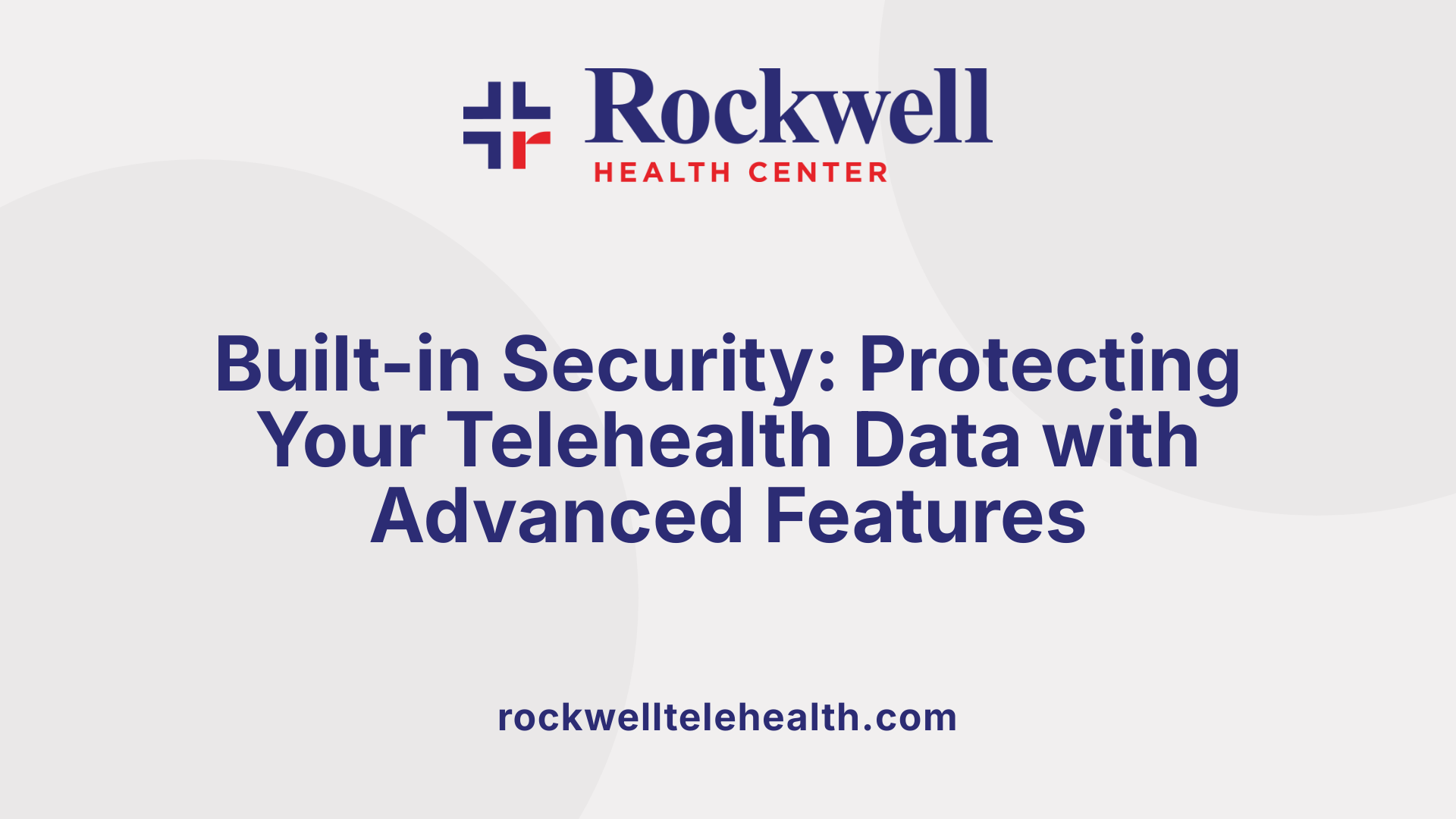 Many telehealth platforms incorporate a variety of security features to protect patient data and maintain confidentiality. One of the most critical elements is end-to-end encryption, which secures video calls, messaging, and all data transferred during a session. This ensures that only the involved parties can decode and view the information.
Many telehealth platforms incorporate a variety of security features to protect patient data and maintain confidentiality. One of the most critical elements is end-to-end encryption, which secures video calls, messaging, and all data transferred during a session. This ensures that only the involved parties can decode and view the information.
To prevent unauthorized access, platforms often deploy multi-factor authentication (MFA), such as two-step verification, along with role-based access controls that restrict feature usage based on user roles. Secure login processes and strict password policies further bolster account security.
Patient data stored in telehealth systems should be encrypted both at rest and during transmission. Detailed audit logs track access and modifications to health information, providing an extra layer of security for accountability and compliance.
Keeping software updated is essential; regular security patches and updates address vulnerabilities and improve resistance to cyber attacks. Devices used for telehealth should have security measures like antivirus software, firewalls, strong passwords, and secure internet connections—preferably avoiding public Wi-Fi that is prone to interception.
Compliance features are fundamental, ensuring platforms meet healthcare regulations such as HIPAA. These include secure communication channels, digital consent management, and secure methods for transmitting prescriptions.
Overall, employing these robust security protocols helps safeguard patient privacy and maintains trust in telehealth services. As additional safeguards, healthcare providers should conduct routine security assessments and educate staff on cybersecurity best practices.
Legal and Regulatory Frameworks Shaping Telehealth Privacy and Security
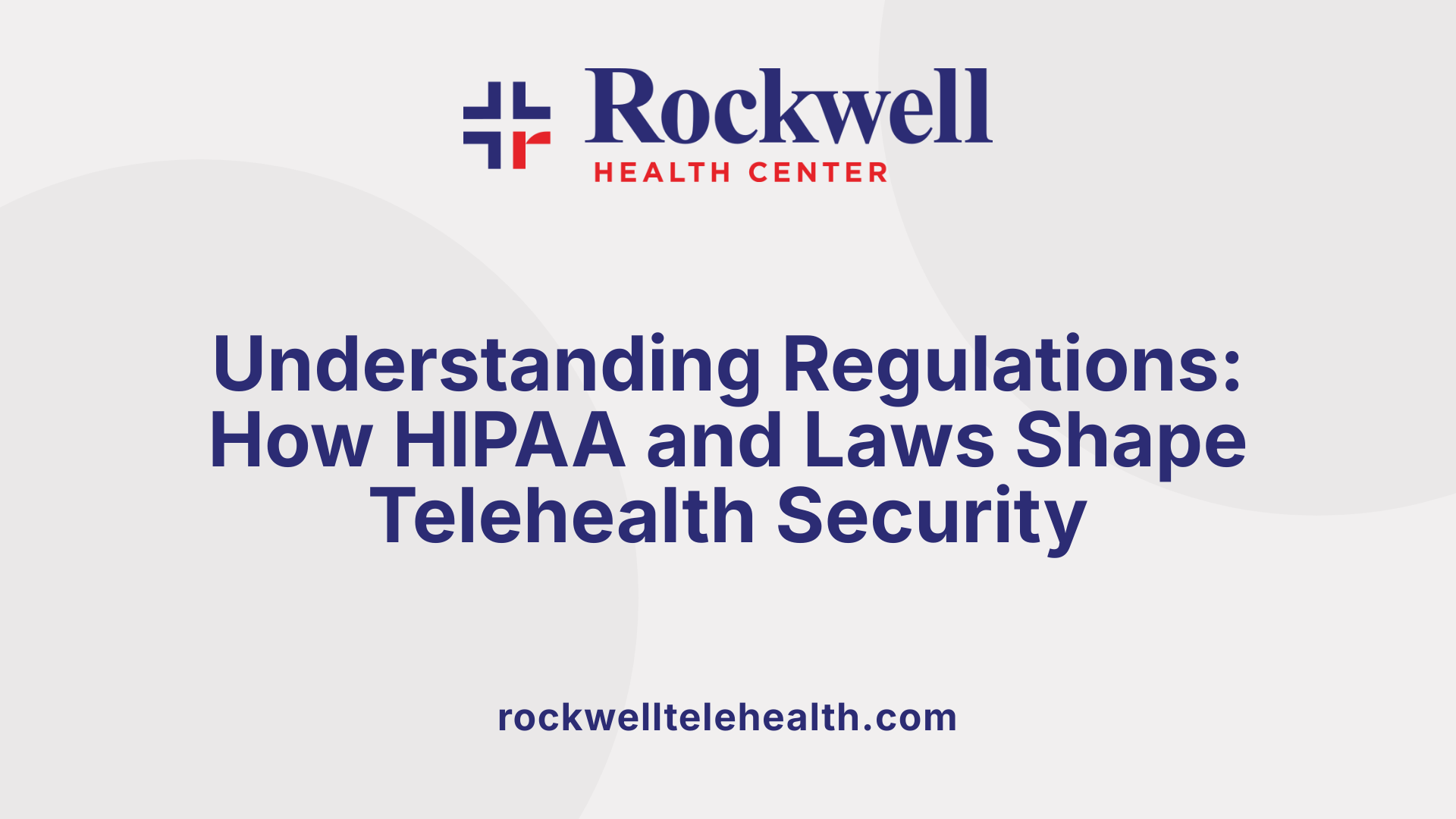
How do legal and regulatory frameworks, such as HIPAA, impact telehealth privacy and security?
Legal and regulatory frameworks like the Health Insurance Portability and Accountability Act (HIPAA) are fundamental in shaping how telehealth services handle patient information securely. HIPAA establishes strict standards to protect the privacy and confidentiality of protected health information (PHI). These rules require healthcare providers and third-party vendors involved in telehealth to implement comprehensive safeguards.
The Privacy Rule ensures that patient data is only shared with authorized individuals and limits disclosures without patient consent. Meanwhile, the Security Rule emphasizes technical controls such as encryption, strong passwords, audit logs, and access controls to prevent unauthorized access to electronic PHI. These measures are vital in telehealth, where communication often takes place over digital platforms.
During the COVID-19 pandemic, enforcement of HIPAA rules was temporarily relaxed to facilitate rapid adoption of telehealth, allowing more platforms like Zoom and Skype to be used. However, this was a temporary measure, and providers are now encouraged to ensure full compliance with HIPAA standards.
The impact of these regulations is evident in the stringent requirements to encrypt data in transit, verify patient identities, and secure devices and networks. HIPAA also mandates regular staff training and risk assessments to identify vulnerabilities. Overall, compliance with HIPAA influences telehealth providers to adopt secure technology solutions, safeguard patient confidentiality, and maintain trust during remote healthcare delivery.
| Regulation Aspect | Main Requirement | Technical Safeguards | Purpose |
|---|---|---|---|
| HIPAA Privacy Rule | Protect patient disclosures | Confidential communication, patient control | Ensure patient confidentiality |
| HIPAA Security Rule | Protect electronic PHI | Encryption, access controls, audit logs | Prevent unauthorized electronic access |
| Temporary COVID-19 Flexibilities | Use of widely available apps | Limited dataset controls | Quickly expand access to telehealth |
| Ongoing Compliance | Regular risk assessments | Staff training, security updates | Sustain data security and privacy |
Maintaining strict adherence to these rules is essential for telehealth providers to offer safe, confidential, and compliant services, fostering patient trust and legal protection.
Cybersecurity Challenges and Risks in Telehealth
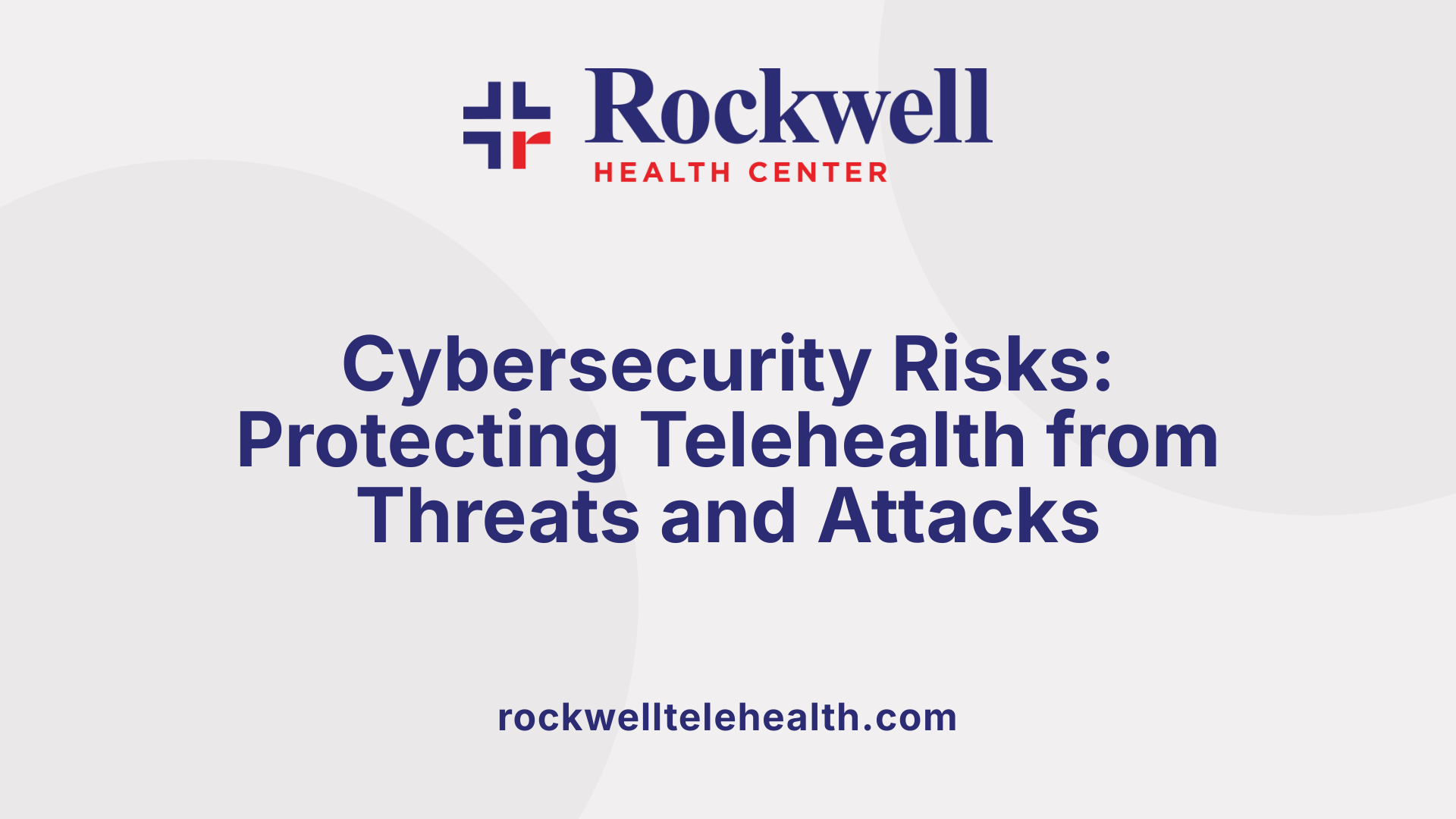
What are the cybersecurity risks and challenges associated with telehealth?
Telehealth introduces significant cybersecurity concerns that can threaten the privacy and security of sensitive health information. These risks include data breaches, hacking, malware attacks, and unauthorized access to health data stored or transmitted through telehealth platforms.
Cybercriminals often target telehealth systems using tactics like phishing, session hijacking, and ransomware, which can compromise personal health information and disrupt care. Weak authentication measures and the absence of end-to-end encryption can further expose patient data to unauthorized viewers or cyberattacks.
Environmental challenges, such as patients' lack of private spaces during virtual visits, compromise confidentiality. Digital literacy gaps, device management issues, and insecure networks—especially public Wi-Fi—are additional operational vulnerabilities that increase exposure to threats.
The growing use of Internet of Things (IoT) devices connected to health systems expands the attack surface, making data susceptible to interception or malicious manipulation. Insecure devices, such as implantable sensors and smart medical equipment, represent additional points of vulnerability.
Common threats include phishing scams that trick users into revealing login credentials, session hijacking where cybercriminals take over active sessions, and ransomware attacks that lock providers out of systems until a ransom is paid.
To combat these challenges, healthcare organizations need a comprehensive security approach. This should include implementing encryption techniques to protect data in transit and at rest, enabling multi-factor authentication to verify user identities, and conducting regular staff cybersecurity training. Ensuring software and systems are kept up-to-date with security patches also helps close vulnerabilities.
Adhering to privacy laws like HIPAA is essential, along with establishing strict operational protocols to ensure patient data remains secure during all telehealth interactions. Only using HIPAA-compliant platforms equipped with end-to-end encryption guarantees that communications stay confidential.
In summary, while telehealth offers convenience and improved access to care, it requires diligent cybersecurity measures. Combining technology safeguards with operational policies and staff education forms the backbone of a secure telehealth environment, ensuring patient trust and compliance with healthcare regulations.
Strategies for Protecting Patient Data and Ensuring Confidentiality
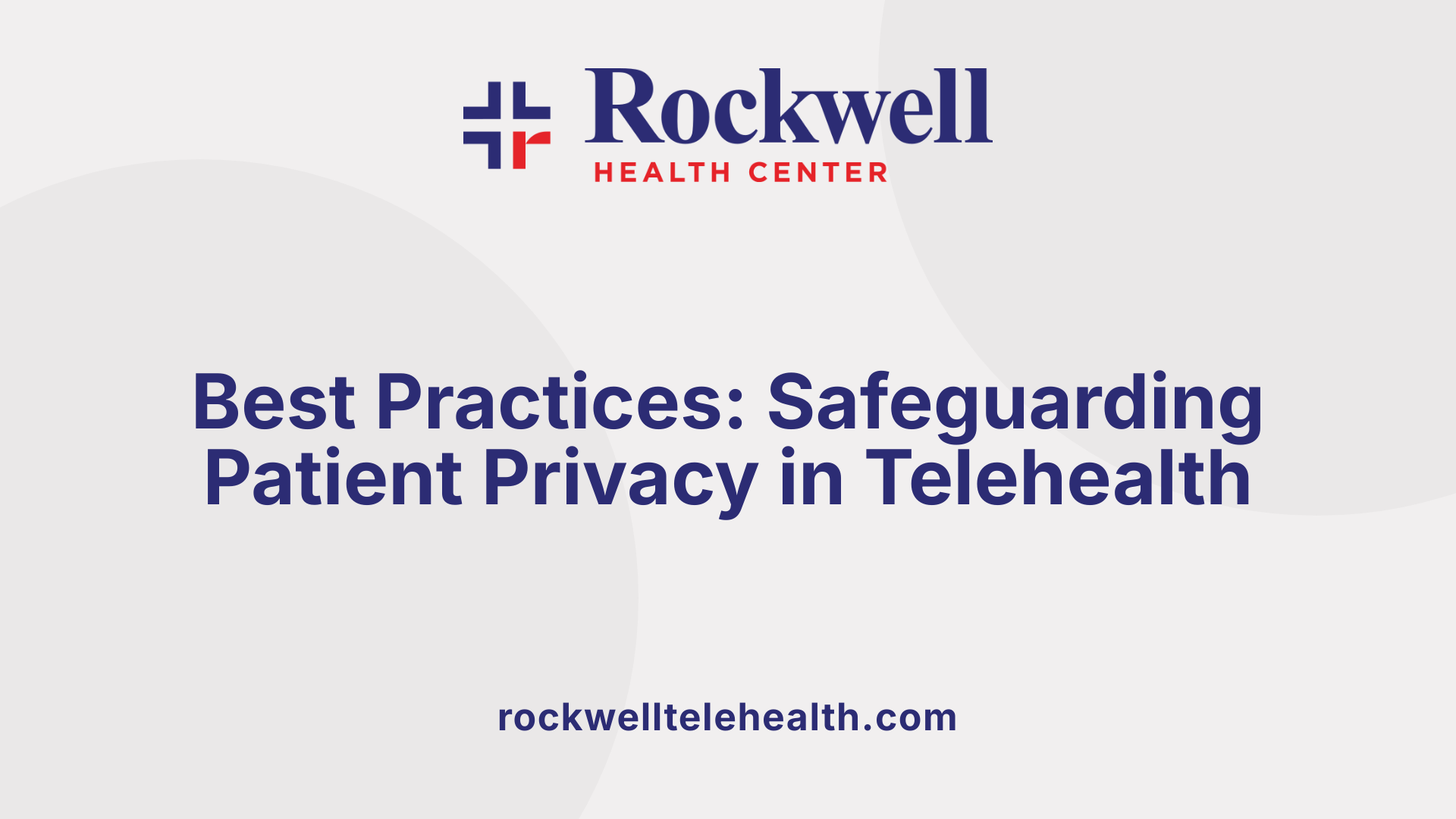
What strategies can healthcare providers implement to protect patient data and maintain confidentiality in telehealth?
Protecting patient information during telehealth sessions requires a combination of technical safeguards and operational procedures. Healthcare providers should use end-to-end encryption in their telehealth platforms, which ensures that communications are secure and can only be decoded by authorized parties.
Implementing secure access controls, such as strong, unique passwords and multi-factor authentication, helps restrict system access to verified users. Virtual private networks (VPNs) add an extra layer of security when accessing patient data remotely.
Regular staff training is essential to educate healthcare workers about cybersecurity best practices, potential threats, and privacy policies. Continuing awareness campaigns keep staff updated on emerging risks and proper protocols.
Routine risk analyses and ongoing security assessments allow organizations to quickly identify vulnerabilities and adapt their defenses accordingly. These evaluations help refine policies and implement necessary updates.
Verification of HIPAA compliance and platform security before adopting new telehealth tools is critical. Only approved, compliant platforms should be used for consultations to protect sensitive health data.
Encouraging patients to conduct their telehealth visits in private, quiet, and secure locations minimizes the risk of unauthorized viewers intercepting conversations.
Lastly, verifying patients' identities at the start of each session and confirming consent practices help maintain trust and safeguard information from unauthorized access. Combining these strategies ensures a robust approach to privacy and confidentiality in telehealth services.
Building Trust and Transparency: Elevating Privacy Practices in Telehealth
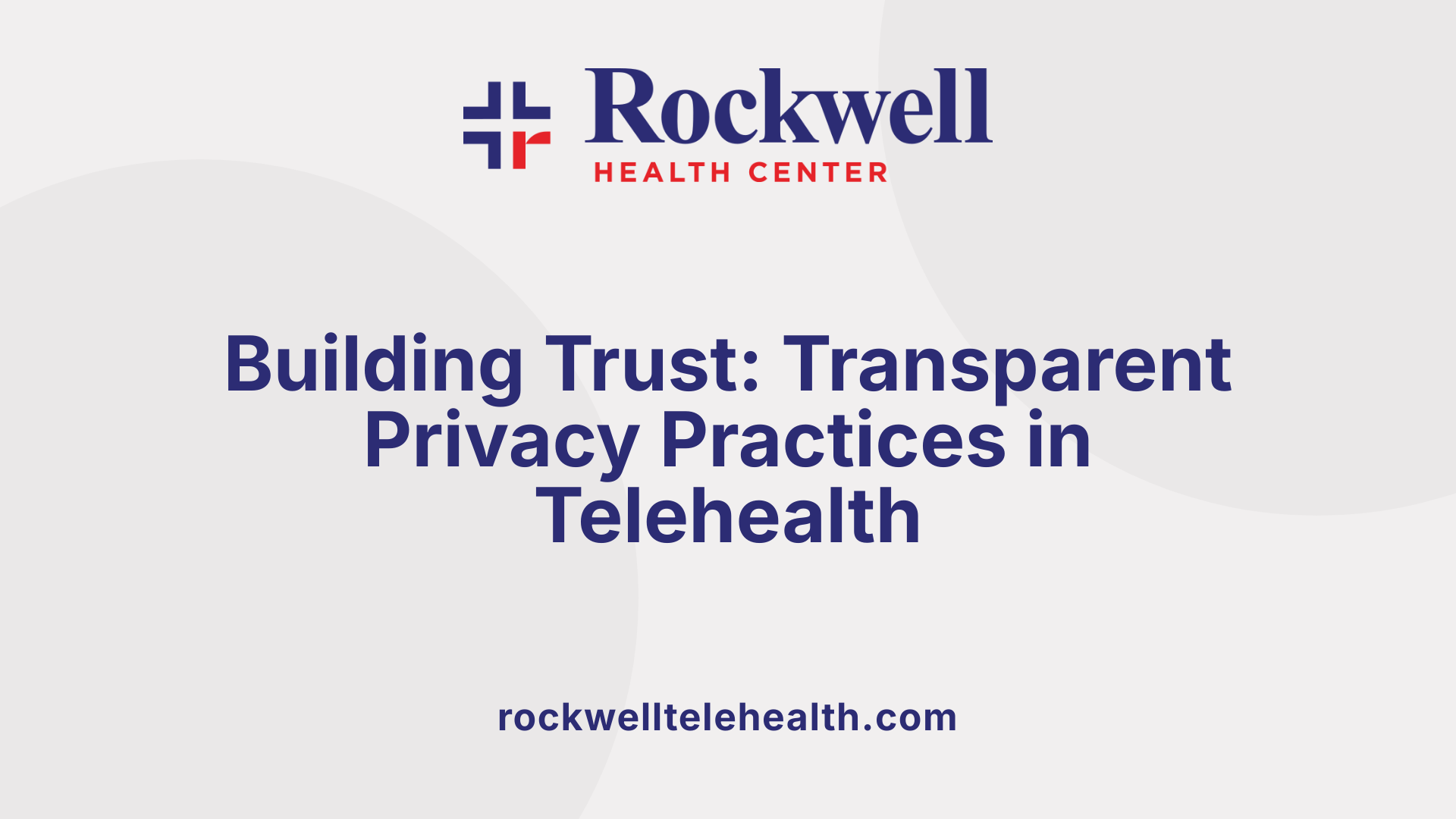
How can telehealth providers build patient trust by ensuring privacy and security?
Trust is essential for successful telehealth services. Patients need to feel confident that their personal health information is protected during virtual visits. Healthcare providers can foster this trust through open communication about privacy policies and security practices. Explaining how telehealth platforms comply with standards such as HIPAA, GDPR, or ISO27001 reassures patients that their data is handled responsibly.
Implementing technical safeguards is equally important. Using encrypted connections, virtual waiting rooms, and clear indicators of who is participating during sessions enhances transparency. These features show patients that their consultations are private and secure.
Providing educational resources and testimonials from other patients can help demystify the technology and reinforce confidence. Clear tutorials on how to use telehealth platforms securely, along with sharing positive experiences, educate and reassure users.
Listening actively to patient concerns about privacy, demonstrating empathy, and maintaining professionalism create a respectful environment that encourages open dialogue. This approach also addresses specific worries and fosters trust.
To further strengthen confidence, providers should focus on maintaining reliable technology, offering patients options to control their participation, and always prioritizing confidentiality. Regular updates on security practices and openness about any issues encountered show a commitment to safeguarding sensitive health data.
In sum, transparent communication, user education, technical safeguards, and professionalism are vital in establishing a trustworthy telehealth environment that respects patient privacy and security.
Prioritizing Privacy for a Secure Telehealth Future
Maintaining a secure telehealth environment necessitates a comprehensive approach encompassing advanced technological safeguards, staff training, patient education, and strict adherence to regulatory standards like HIPAA. Transparent privacy policies, secure platforms, and environmental considerations forge the foundation of patient trust. As telehealth expands, ongoing investment in privacy and security measures ensures that virtual care remains confidential, trustworthy, and compliant—ultimately enhancing patient outcomes and confidence in digital healthcare.
References
- Telehealth Privacy and Security Tips for Patients
- Privacy and Security Risk Factors Related to Telehealth ...
- About Telehealth Privacy & Security
- 13 Steps for Securing Patient Privacy While Using Telehealth
- Telemedicine Security & Privacy Risks
- Telehealth Privacy & Security Concerns: Is Your Data Safe?
- Develop a privacy and security telehealth strategy
- Privacy and Security Risk Factors Related to Telehealth ...
- 13 Steps for Securing Patient Privacy While Using Telehealth
- How do I protect my data and privacy?



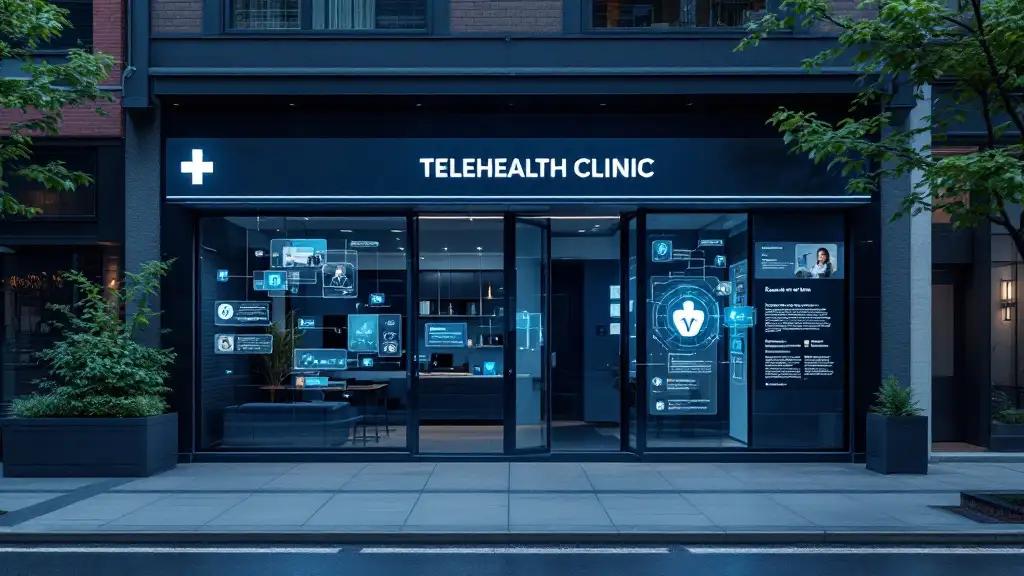




















































































.png)